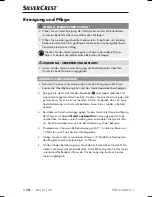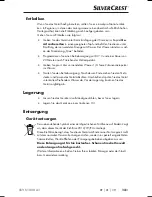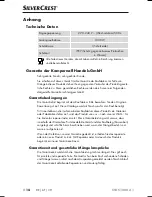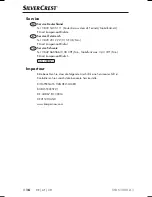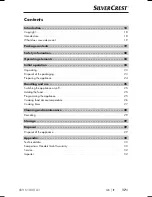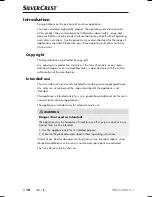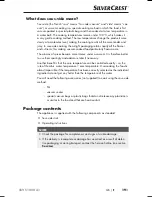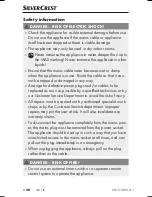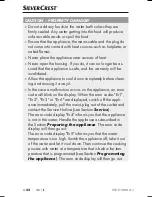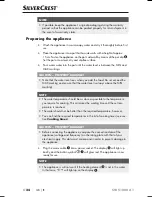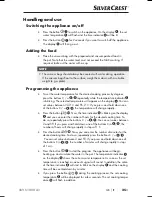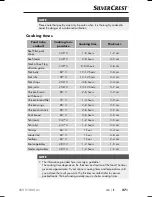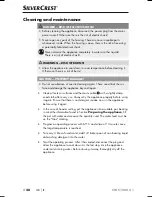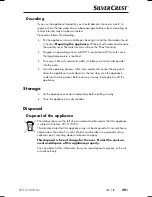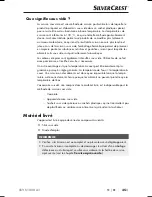
■
26
│
GB
│
IE
SSVS 1000 A1
♦
When the time has elapsed, the appliance will switch off automatically and
the display will go out . You will hear beep sounds .
♦
Remove the cooked food from the pot using a suitable tool (e .g . kitchen or
barbecue tongs) .
♦
Pull the mains plug out of the power socket and take the appliance carefully
out of the pot . To do so, open the pot clip
.
DANGER!
►
Do not touch the hot heating element . Hot water can drip from the
heating element . There is a risk of burns and scalding .
♦
Cut open the vacuum bag and remove the food . Depending on the type of
food cooked, your meal can be served immediately or must be prepared
further (e .g . briefly fried) .
♦
When you switch the appliance on again, the last set temperature will flash
on the display .
Cooking food at core temperature
The following tables show how cooked a piece of food (e .g . a piece of meat)
is when the core temperature is reached . This also does not change even after
longer submersion in the pot, as the core temperature in the food can never be
higher than the set water temperature .
The core temperature is the temperature in the middle of the food .
We recommend the following temperatures for a certain degree of cooking:
Food
Core
temperature
Cooking level
Beef, lamb,
pork and
game
49°C
blue – almost raw
52°C - 55°C
rare – cooked around the edge
56°C - 60°C
medium rare – a large part still pink
61°C - 65°C
medium – pink in the middle
66°C - 68°C
medium well done – almost completely cooked
69°C - 71°C
well done – thoroughly cooked
Poultry
72°C (boneless)
cooked
85°C (with bones)
cooked
Fish and
seafood
40°C
glazed – barely done
41°C - 45°C
mi-cuit – half cooked
46°C - 55°C
a point – firm
Vegetables
83°C - 87°C
cooked
IB_288623_SSVS1000A1_LB8.indb 26
29.08.17 13:42
Summary of Contents for 288623
Page 3: ...A B...

